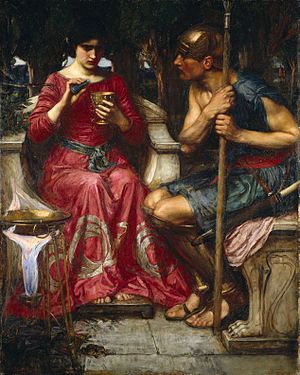
Continuing my little series of posts reading the Bible with popular ancient fiction in mind, or the other way around, with the Argonautica as the case study.
Book 3 — Seaton’s translation of the third of the four books of the Argonautica. (Ignore the chapter numbering in the title.)
Change of pace in the story flow
Book three of the Argonautica illustrates the one of the distinctive features found in all four gospel narratives, a feature that is found in much other popular literature of the day, too. Here the adventure of Jason and his Argonauts shifts gears. Up till now the story has been a travelogue. One adventure after the other as the heroes move from one place to the next. But with book 3 the pace settles down into a very detailed and lengthy narrative in a single setting, covering a short period of time, and that relates the climax to which the previous itinerary has been leading us.
After Jesus and his disciples experience many mini-adventures as they travel this side and the other side of the lake, to this town and that region, they come to Jerusalem — the place where they have been destined to meet their destiny, to accomplish what has been planned from the beginning. And it is from this point that the gospels settle into a detailed narrative of all that is related to this climactic adventure. It all happens in the one region, and is told in much more detail than the earlier brief episodes.
Scholars have in the past attempted to explain this difference in pace by suggesting the Passion Narrative was originally an independent story that was later extended with the earlier episodes. But a little more familiarity with the popular epics and novels of the day would point to a simpler explanation.
Renewed beginning at the climax Continue reading “Bible and the Argonauts: Chapter 4 (Book 3)”

